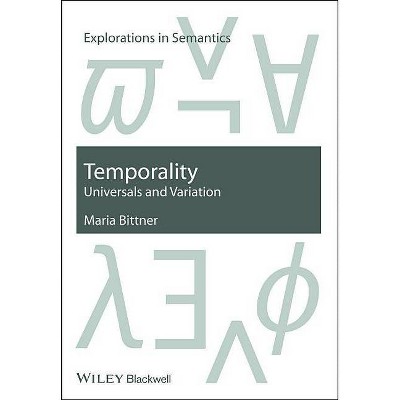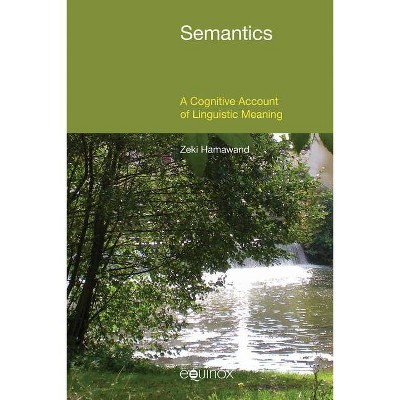Temporality - (Explorations in Semantics) by Maria Bittner (Hardcover)

Similar Products
Products of same category from the store
AllProduct info
<p/><br></br><p><b> About the Book </b></p></br></br>"Cutting-edge research on directly compositional dynamic semantics of languages with and without grammatical tense"--<p/><br></br><p><b> Book Synopsis </b></p></br></br><p><i>Temporality</i> surveys the ways in which languages of different types refer to past, present, and future events, through an in-depth examination of four major language types: tense-based English, tense-aspect-based Polish, aspect-based Chinese, and mood-based Kalaallisut.</p> <ul> <li>Cutting-edge research on directly compositional dynamic semantics of languages with and without grammatical tense</li> <li>New in-depth analysis of temporal, aspectual, modal, as well as nominal discourse reference</li> <li>Presents a novel logical language for representing linguistic meaning (Update with Centering)</li> <li>Develops a unified theory of tense, aspect, mood, and person as different types of 'grammatical centering systems'</li> </ul><p/><br></br><p><b> From the Back Cover </b></p></br></br><p>Representing the culmination of fifteen years of research by the author, <i>Temporality</i> surveys the ways in which languages of different types refer to past, present, and future events and how these referents are related to the knowledge and attitudes of those involved in the dialogue.</p> <p>Four major language types are examined in depth: tense-based English, tense-aspect-based Polish, aspect-based Chinese, and mood-based Kalaallisut. Each contributes to a series of logical representation languages, exemplifying four special cases of a common logical language which, Bittner argues, underlies all language types. The ways in which these four language types differ is in whether they choose to grammaticalize discourse reference to times (tense), events (aspect), and/or attitudes (mood), and how non-grammaticalized elements are inferred. </p> <p>The common logical language, according to Bittner, is a dynamic update logic, building on DRT and Centering Theory, but with a novel architecture. For example, the distinction between focal vs. peripheral attention plays a key role, parallel to focal vs. peripheral vision.</p> <p>This cutting-edge research is valuable for formal semanticists, philosophers of language, logicians, and computer scientists interested in cross-linguistic formal semantics, dynamic semantics, and direct semantic composition in Categorial Grammar.</p><p/><br></br><p><b> About the Author </b></p></br></br><p><b>Maria Bittner </b>is a Professor of Linguistics at Rutgers University and a member of the editorial boards of <i>Journal of Semantics</i> and <i>Semantics & Pragmatics</i>. She is well known for her work on cross-linguistic formal semantics, dynamic semantics, and syntax-semantics interface, with special focus on Kalaallisut (Eskimo-Aleut: Greenland). Her early research in LF-based static semantics culminated in <i>Case, Scope, and Binding</i> (1994).</p>
Price History
Cheapest price in the interval: 118.5 on November 8, 2021
Most expensive price in the interval: 118.5 on December 20, 2021
Price Archive shows prices from various stores, lets you see history and find the cheapest. There is no actual sale on the website. For all support, inquiry and suggestion messagescommunication@pricearchive.us




















